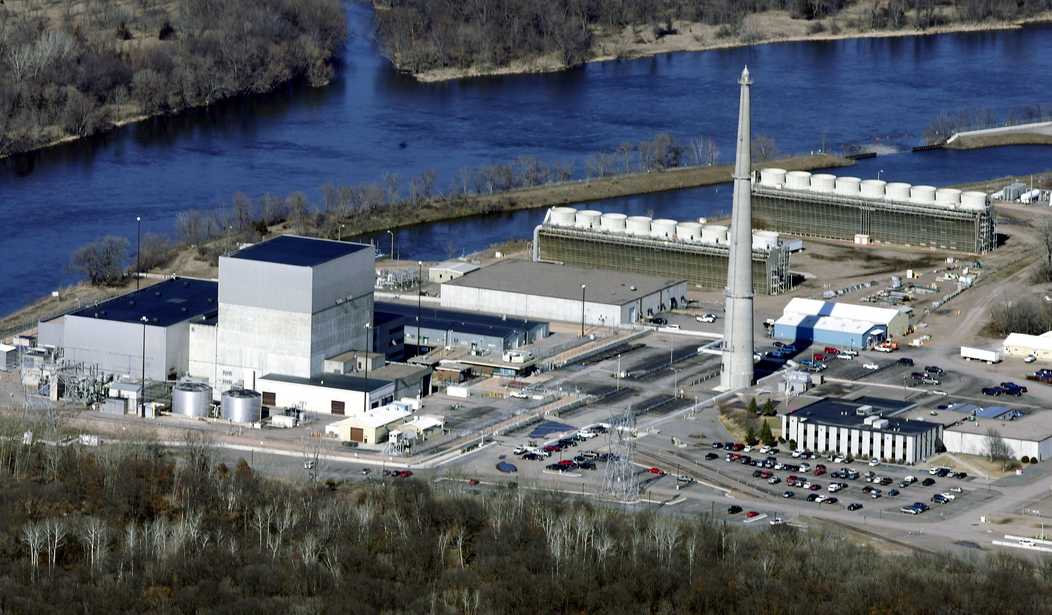Atlanta Journal-Constitution photojournalist Arvin Temkar claims, based on the 88-2 Senate vote on the ADVANCE Act, there is a “bipartisan consensus on nuclear power as an opportunity to keep pace with China on renewable energy.”
Temkar was parroting Lesley Jantarasami, who directs energy programs at the Bipartisan Policy Center, spoken at “The Nuclear Frontier: Securing America’s Energy Future,” hosted by The Hill and sponsored by The Nuclear Company.
Jantarasami said the near-unanimous vote on the Accelerating Deployment of Versatile, Advanced Nuclear for Clean Energy Act indicates “members of both parties are looking to build on decades of innovation and … create this new opportunity to build new gigawatt-scale clean energy facilities in the United States.”
Sponsors Shelley Capito (R-WV) and Tom Carper (D-DE) say the law modernizes outdated rules restricting international investment in U.S. nuclear energy projects, reduces regulatory costs for licensing advanced nuclear reactor technologies, and directs the Department of Energy to improve its process for approving the export of U.S. technology to international markets.
The rest of the provisions are bothersome. Congress now agrees that nuclear is not the great Satan, but leaving nuclear’s future in the hands of the obstructionist Nuclear Regulatory Commission hardly seems a pathway to “keep pace with China.” The NRC’s lengthy track record is a major reason that new nuclear power plants have been so rarely brought online.
It is telling that the Office of Nuclear Energy boasted that the NRC had certified “the nation’s first small modular reactor” and issued its first construction permit for a non-light-water design in the year prior to adoption of the ADVANCE Act. It only took 15 years for the NRC to approve a commercial SMR Oregon State University scientists invented in 2007. The U.S. military, of course, has used “small reactors” in ships and submarines since the 1950s.
Recommended
The ADVANCE Act provides the NRC with a quiver full of ways to continue to slow nuclear energy development, beginning with its new mandate to “explore” methods of quickening the licensing process for new nuclear technology. One key provision is the 18-month timetable for the NRC to “develop guidance” for licensing and regulating microreactor designs.
The sad reality is that only two military microreactor projects are on the table (in Alaska and Idaho), and the Office of Nuclear Energy does not even mention that a host of companies have designed microreactors for a myriad of commercial, industrial, and even residential customers.
The Act also empowers the NRC to “lead in international forums” to develop regulations for advanced nuclear reactors, directs the NRC to establish an accelerated licensing review process for reactors at existing nuclear sites, and requires the NRC to develop a pathway to for timely licensing of nuclear facilities at retired coal mines.
The one to watch is the requirement that the NRC update its mission statement to reflect “modern beneficial use of nuclear material and energy.” Just how the crotchety stall-masters will handle their other newly assigned tasks may hinge on their ability to completely revamp their mission statement, which is entirely focused on “regulation.”
Contrast the NRC’s approach with the words of President Eisenhower in his 1953 speech that urged development of peaceful uses for atomic energy that would make its use for war obsolete. Eisenhower wanted to mobilize experts “to apply atomic energy to the needs of agriculture, medicine, and other peaceful activities,” with a “special purpose” to “provide abundant electrical energy to power-starved areas of the world.”
Nearly 75 years later, Eisenhower’s wishes remain largely unfulfilled, and the NRC has played a major role in distracting America from achieving his noble purposes. But clucking Senators and Congress members brag they have finally found “consensus” that the NRC is now the champion of Eisenhower’s vision.
Robert Hargraves, co-founder of ThorCon International, has quite correctly stated that the main obstacle to a rejuvenated U.S. nuclear industry “remains the mindset” at the NRC and the EPA. Those long-entrenched regulators still rely on “groupthink consensus evolved in nongovernmental organizations originally misled by grant-seeking geneticists” when it comes to human health effects of radiation.
According to Hargraves, nuclear power plants should be treated just as other power plants, with individual owners and operators assigned liability for any (unlikely) radiation harm. Get the NRC out of the loop and the U.S. nuclear industry could actually grow as fast as China’s.
The “brightest lights” to date in this “nuclear revival” are the Bill Gates funded TerraPower project in Wyoming, the long-delayed opening of the Vogtle Units 3 and 4 in Georgia (at ten times what it should have cost), the Sam Altman backed Oklo small modular reactor that might be built in 2027, and the Kairos Power’s Hermes sodium-cooled fast reactor demonstration project in Tennessee.
A few other projects are being touted, but subsidies granted to inefficient wind and solar projects has left the long-suffering nuclear industry far behind in the energy race. Rearranging the deck chairs at the NRC is hardly a clarion call for empowering an industry that for nearly eight decades has been waiting to emerge to transform the future for the billions who even today lack adequate electricity.
How much the U.S. and state governments have thrown at wind and solar subsidies and rebates over the past two decades is difficult to ascertain, but one statistic shows that government subsidies in 2022 totaled $15.6 billion compared with $7.4 billion in fiscal 2016. Wind and solar projects have been given green lights by regulators despite widespread citizen opposition.
Any real “consensus” on a nuclear energy future should involve fast, even emergency, action to streamline permitting or in some cases to create general permits for microreactor and even SMR design and to take other steps to cut bureaucratic costs that have long impeded nuclear progress.
Only such radical moves would give the U.S. a “shot” at catching up with China. Like tortoises, nuclear power plants can have long, prosperous lives, whereas short-lived wind and solar facilities are “hare” today, gone tomorrow.
Duggan Flanakin (duggan@duggansdugout.com) is a senior policy analyst at the Committee For A Constructive Tomorrow who writes on a wide variety of public policy issues.



















Join the conversation as a VIP Member